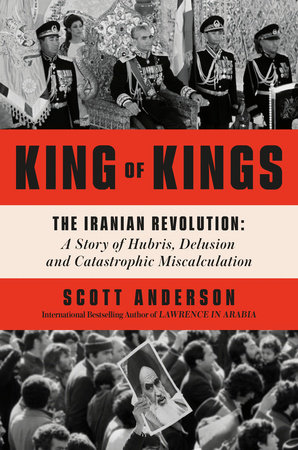If anything, the Shah’s grip appeared to be strengthening. In 1975, he abolished Iran’s two permitted political parties and established a single one in their place, which every adult was required to join. All public buildings and many homes displayed the Shah’s portrait. You couldn’t throw a stone without hitting one, the joke went—though you’d be arrested if you did.
At a New Year’s Eve celebration in Tehran in 1977, President Jimmy Carter made a toast. “There is no other head of state with whom I feel on friendlier terms,” Carter said. In a troublesome region, Iran was an “island of stability.”
Predictably, Khomeini fulminated about Carter’s visit. Iran’s leading afternoon newspaper, Etalaat, struck back with an accusatory editorial, prepared by the government and likely at the Shah’s behest. Khomeini was simultaneously the agent of Communists and of reactionaries, the editorial charged. He had ties to India, and possibly to British imperialists. Or perhaps, the paper insinuated, he was a sensitive soul who’d written love poetry in his youth. (Perhaps he was. After Khomeini’s death, his followers were dumbfounded by the publication of “The Wine of Love,” a collection of his mystical poems. “Release me from these countless pains,” one goes, “from a heart cut in pieces and a breast pierced like a kebab.”)
The Shah had attacked from a position of apparent strength. “My power, both under law and due to the special spiritual link that I have with my people, is at its highest peak,” he boasted in the month that the editorial was published. The peak, and also the precipice. After the editorial appeared, on January 7, 1978, seminarians incensed by the slander of Khomeini staged large demonstrations in Qom. The police opened fire, killing some. It didn’t seem like a huge deal. Yet somehow the unrest continued, increased, and in thirteen months brought the Shah’s regime crashing down. A Khomeini-led Islamic state rose in its stead.
In a timely new book, “King of Kings” (Doubleday), the reporter Scott Anderson discusses Etalaat’s editorial in a chapter titled “The Butterfly Effect.” Like the fabled butterfly wing flap that causes a hurricane, it split the heavens and loosed a revolutionary deluge that transformed the Middle East. If “events had played out just a little differently,” Anderson asks, might the Iranian Revolution have never happened?
